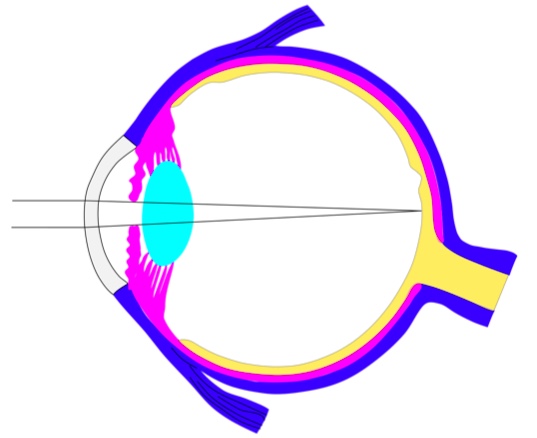This is probably the most common question in ophthalmic medicine practice. “I was told I have a cataract, but it is still too small”.
It seems to us that this issue is fundamentally a misconception. It is analogous to asking, Doctor, do I already have white hair? In its place, a more accurate approximation could be, Doctor, How many white hairs do I have? or Do I have more white hair than before? Or even better, Do I have enough white hair for it to bother me? We will attempt to explain.
The human eye is a system of two lenses that focus light on the retina, the place where “the picture is taken” (see image 1). An external lens, called cornea, and an internal one, called crystalline. It is called crystalline lens because it is transparent during our youth.

As aging progresses, and the results of many oxidation processes start slowly occurring all across the body, the proteins that form this crystalline lens also start to change. These oxidation processes happen all over the systems, the arteries harden, the skin loses elasticity, the hair whitens, etc. In the particular case of the crystalline lens, a very dim change in its color is gradually observed. A yellowish tinge starts to become apparent approximately from age 40. The adequate medical term for this phenomenon is that of “nuclear sclerosis”, and at first, it is quite insignificant.
With the passage of the years, this change in color starts to prevail and the loss of transparency becomes more and more evident, first only to the healthcare provider who observes the eye from the outside with a microscope, and eventually, also for the person whose eye is changing. It is to this gradual opacification that we call cataract. (see image 2). The more opaque this lens becomes, the less light is able to cross it on its way to the retina.

At a certain point in life, which varies depending on each person, their genetic history (How fast do people in my family get white hair), their habits (smoking, diet, how much sun I have received, etc), some disease processes (In diabetes for example, there is precocious cataract formation), and their visual needs (Do I look at tiny letters in the office all day, or do I like sewing, or do I work with cattle for a living, for example), this gradual opacification results in the sensation of loss of vision, first quite dim and slightly blurred, and gradually worse and worse. It is from this point on that a cataract becomes visually significant. Before that, it is like having white hair and not noticing it.
When a cataract is visually significant, or in other words, causes symptoms, it is time to consider surgery. Before such, only very rarely, like in certain kinds of glaucoma or anatomical abnormalities, an ophthalmologist might recommend “preemptive cataract extraction”.
In conclusion, everyone from age 40 has a certain degree of cataract formation, but it will not become apparent until many years later, and it will depend on genetics, habits, clinical history, and visual needs. A yearly visual and ocular check up can determine how advanced and significant this process is in each person.
Thank you very much,
Dr. Victor Flores.
Image 1 (Courtesy of Holly Fischer)
Image 2 (Courtesy of Leo T. Chylack)
